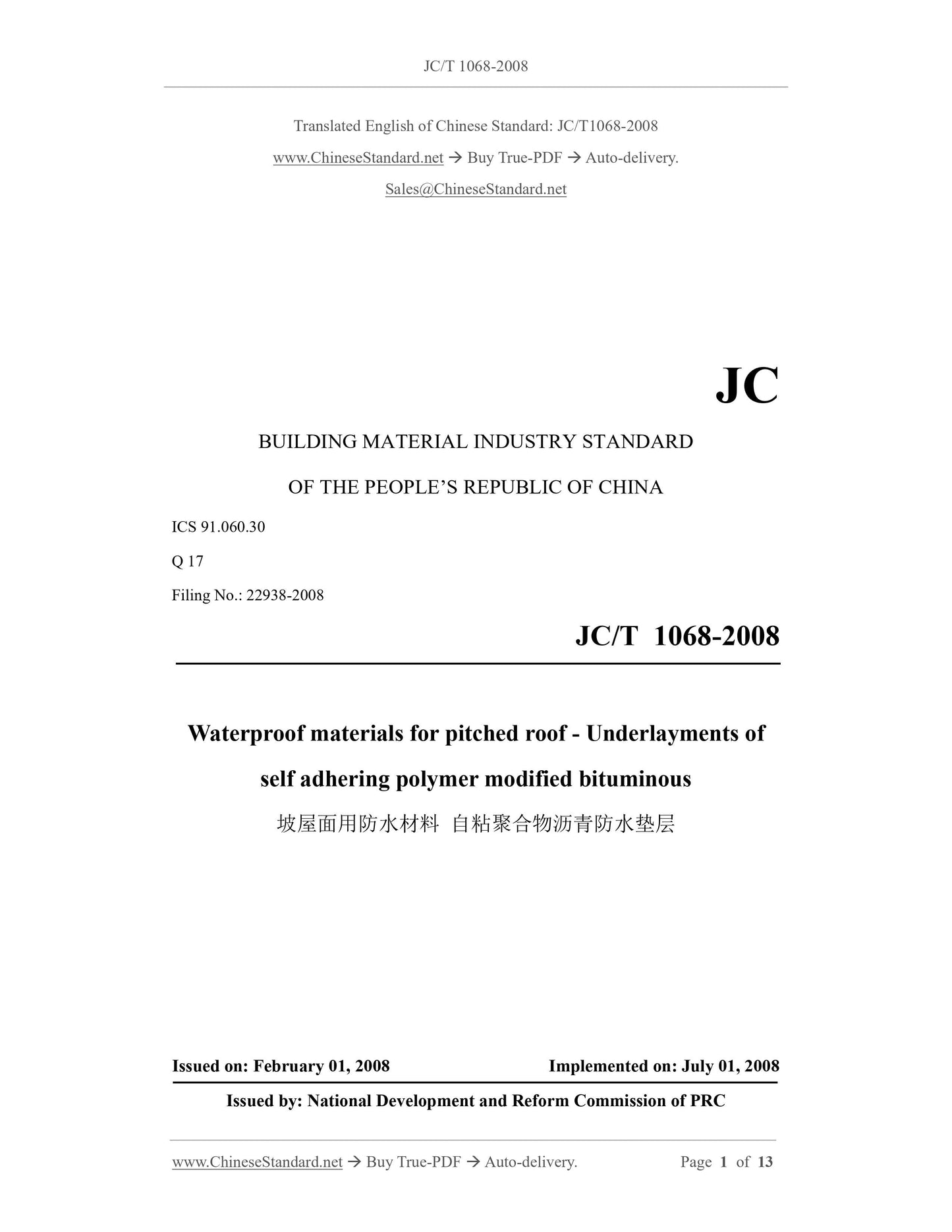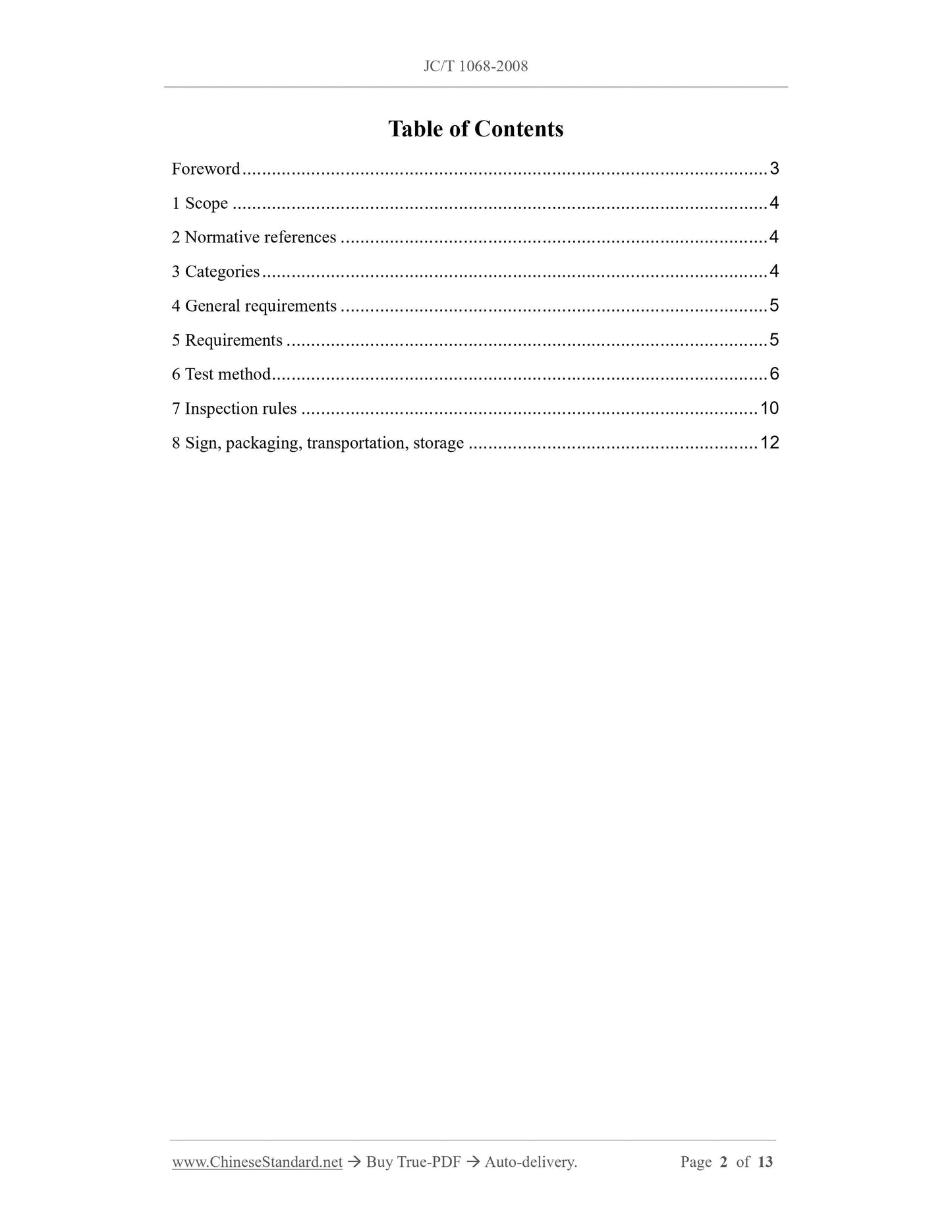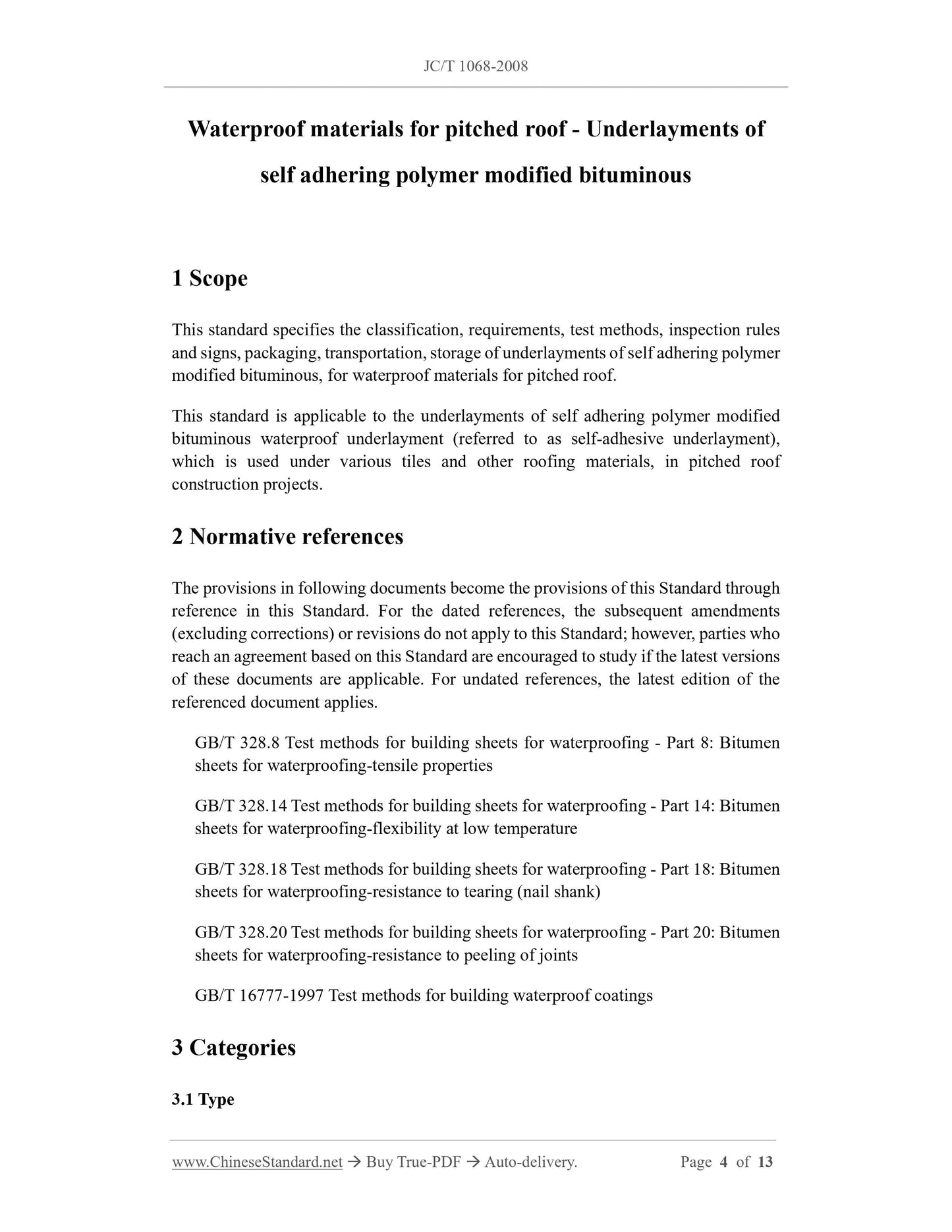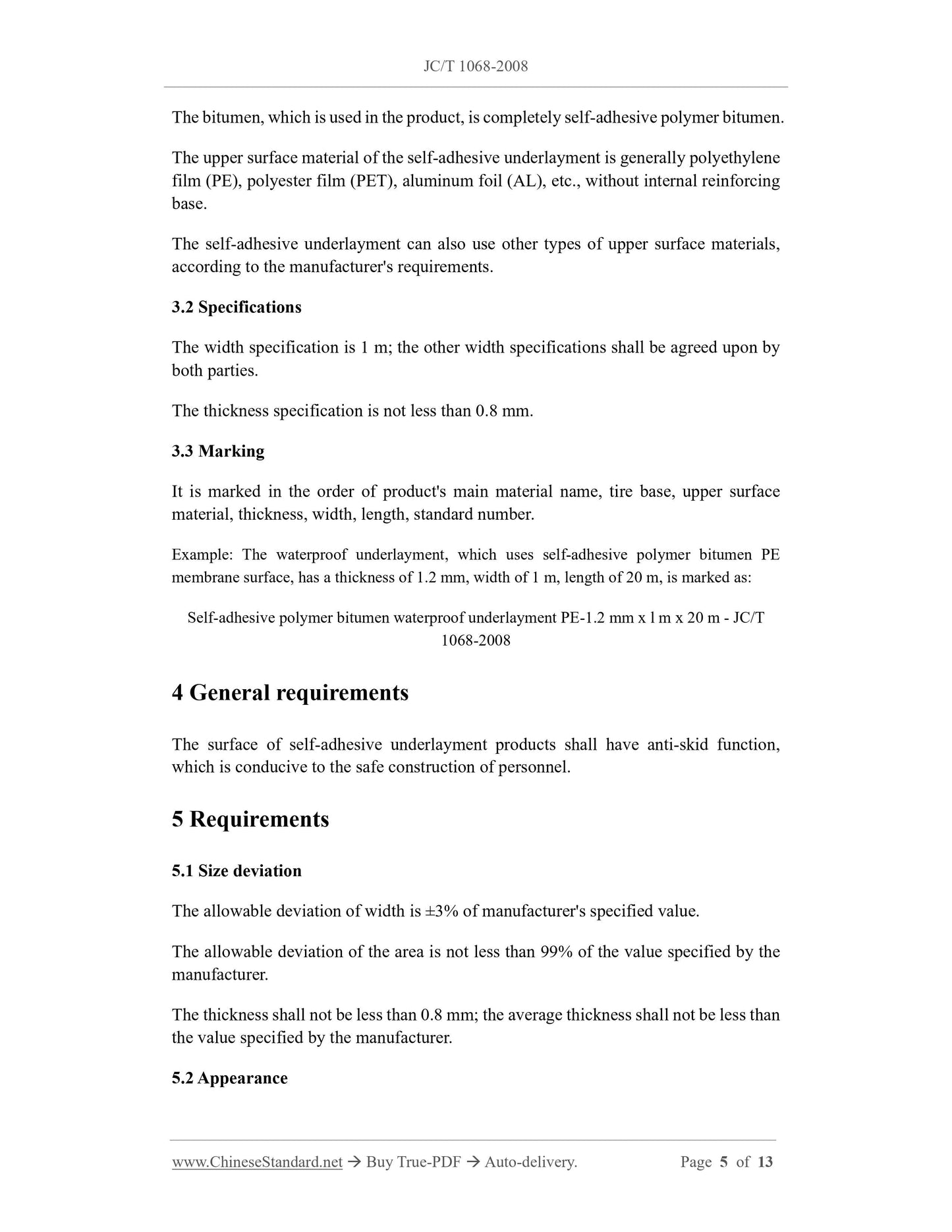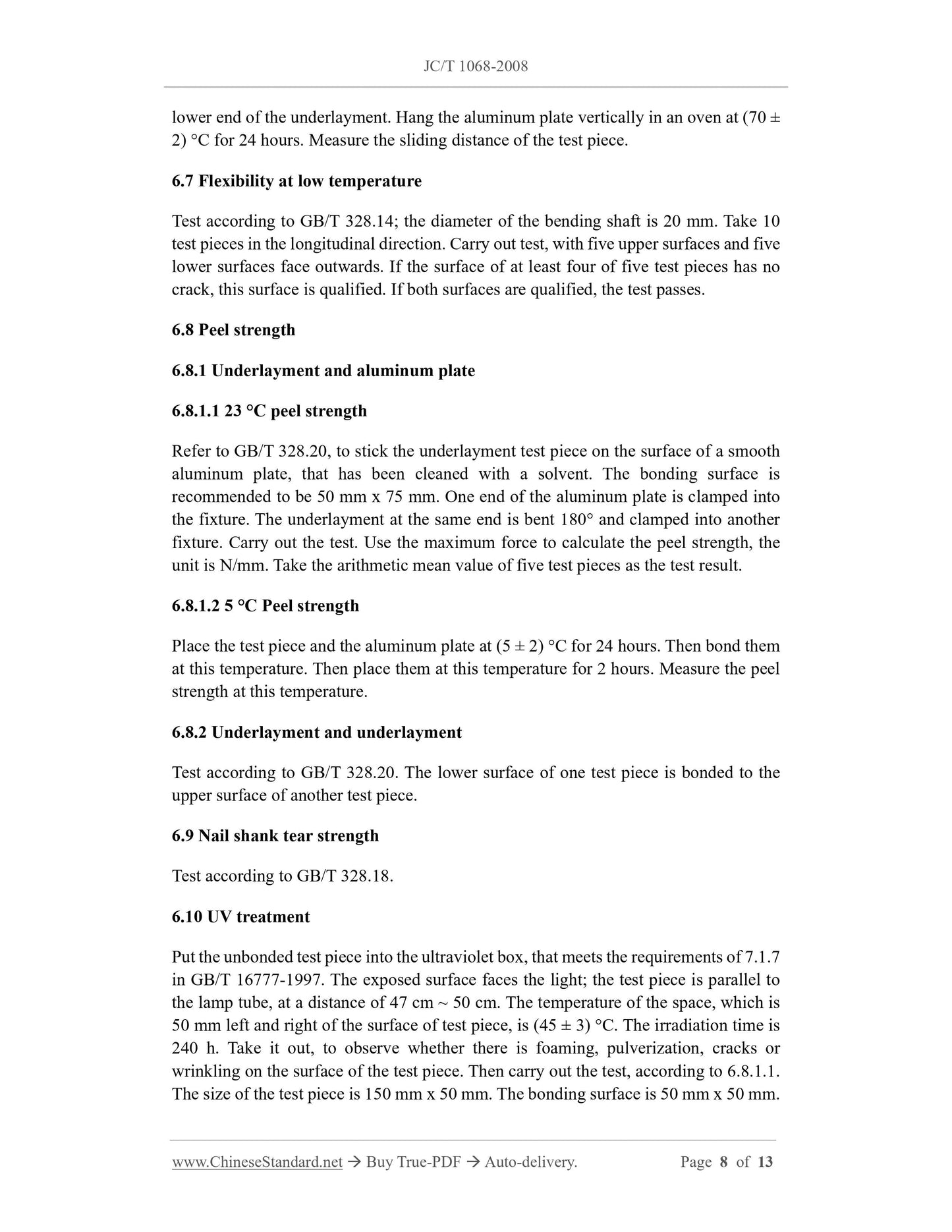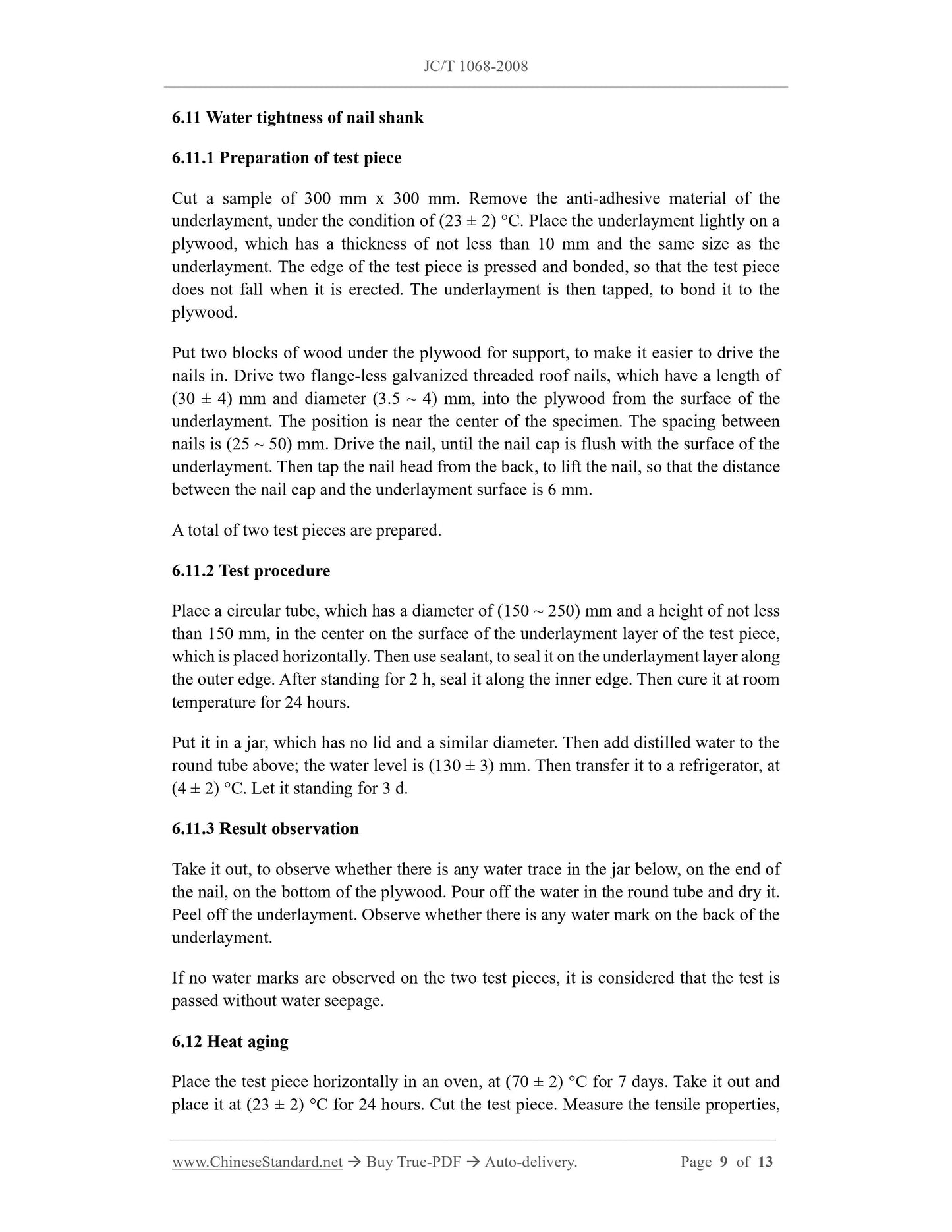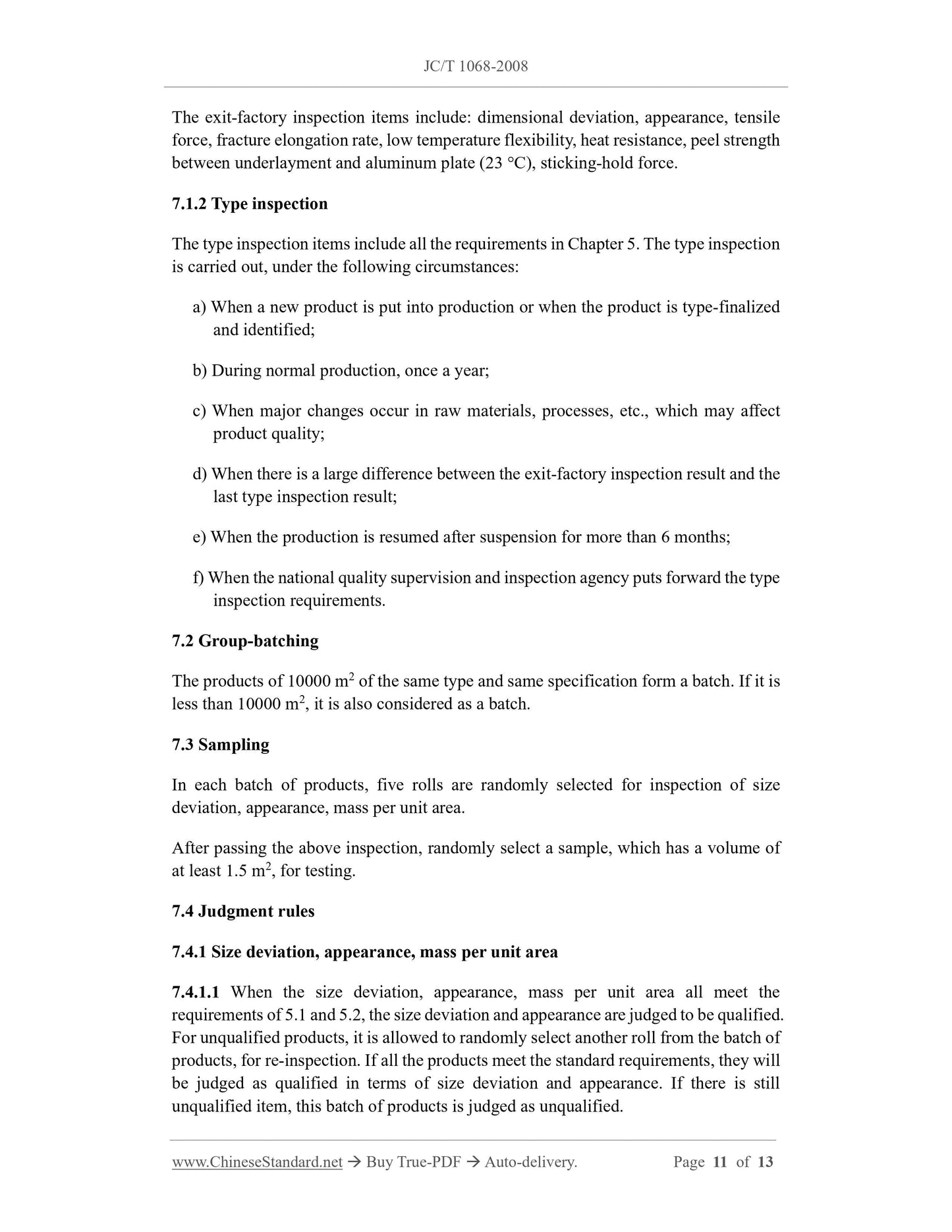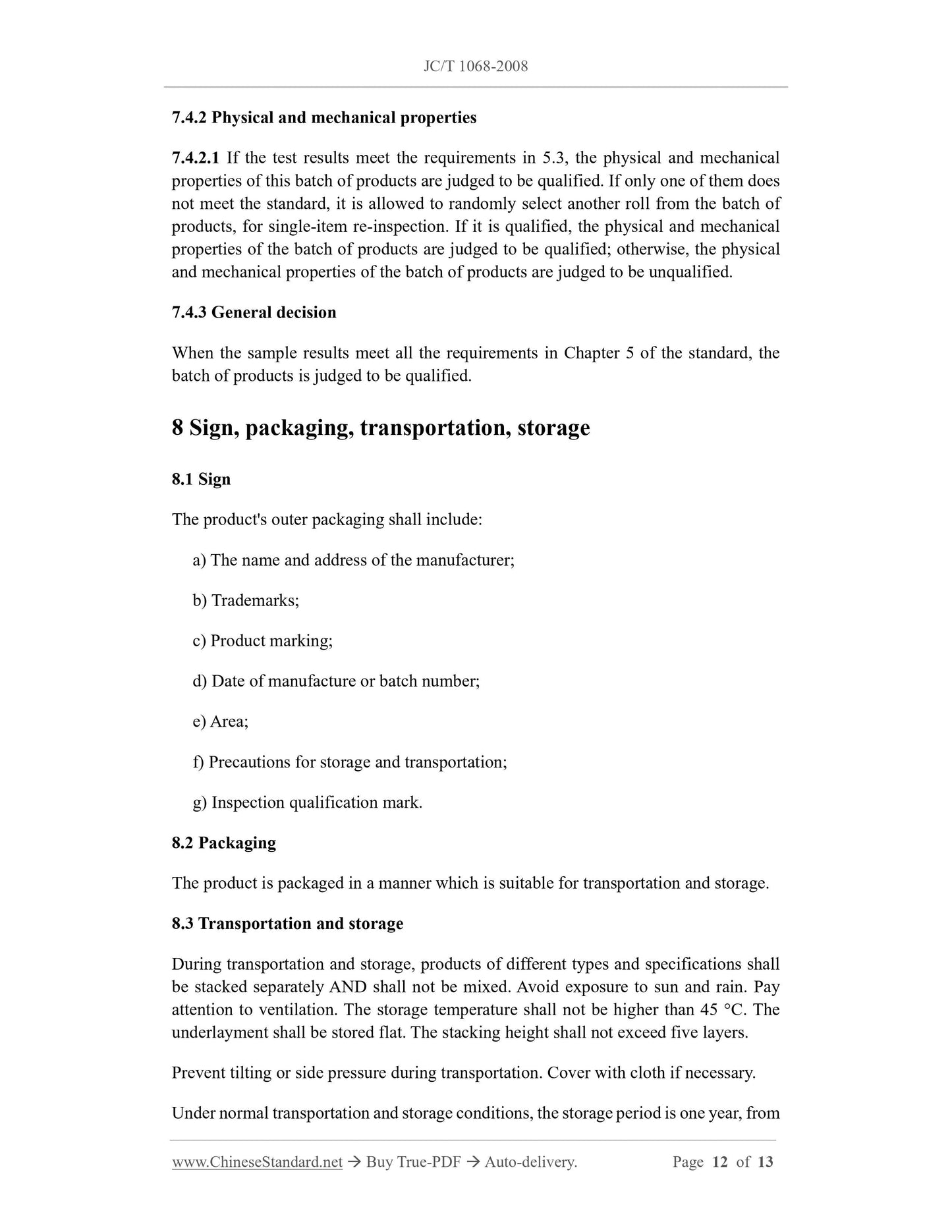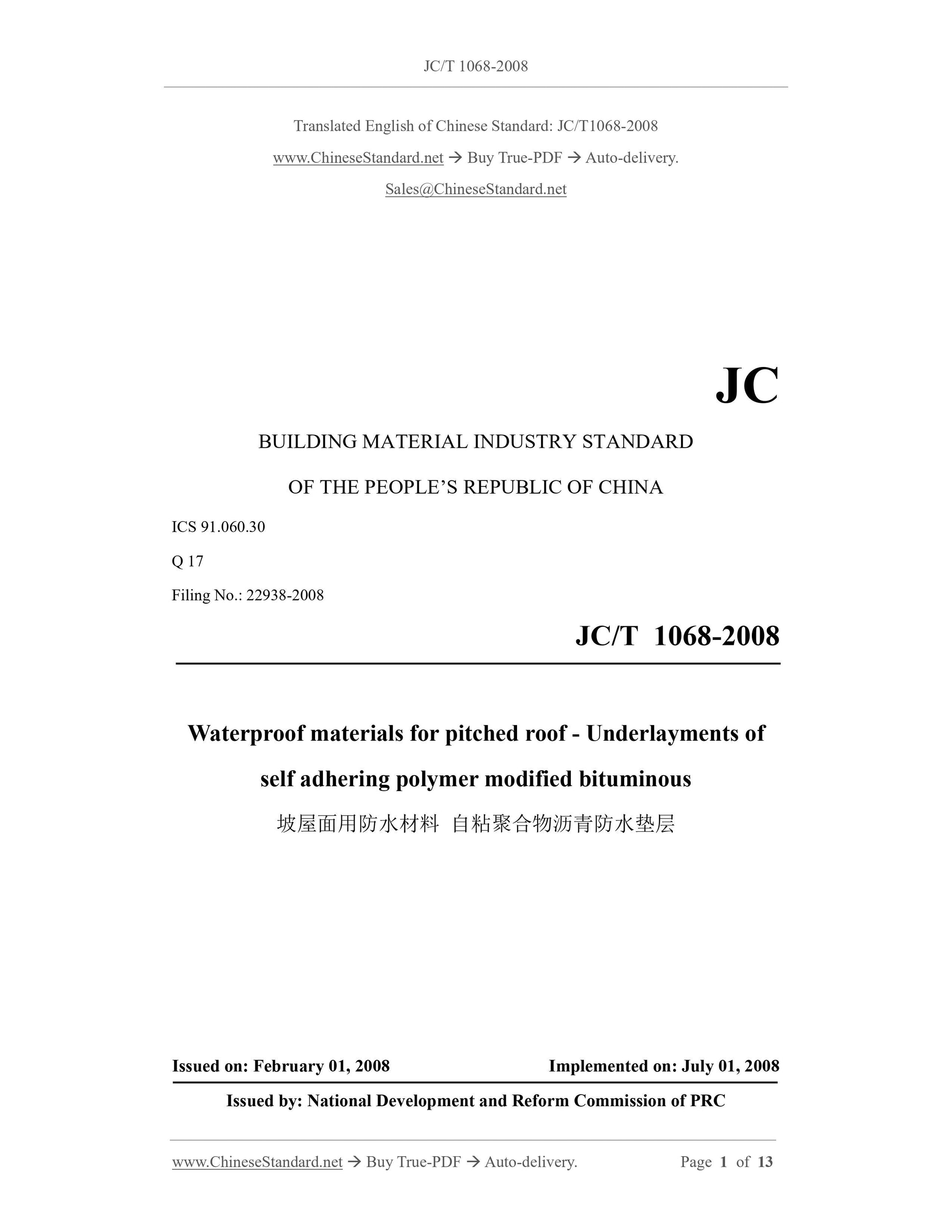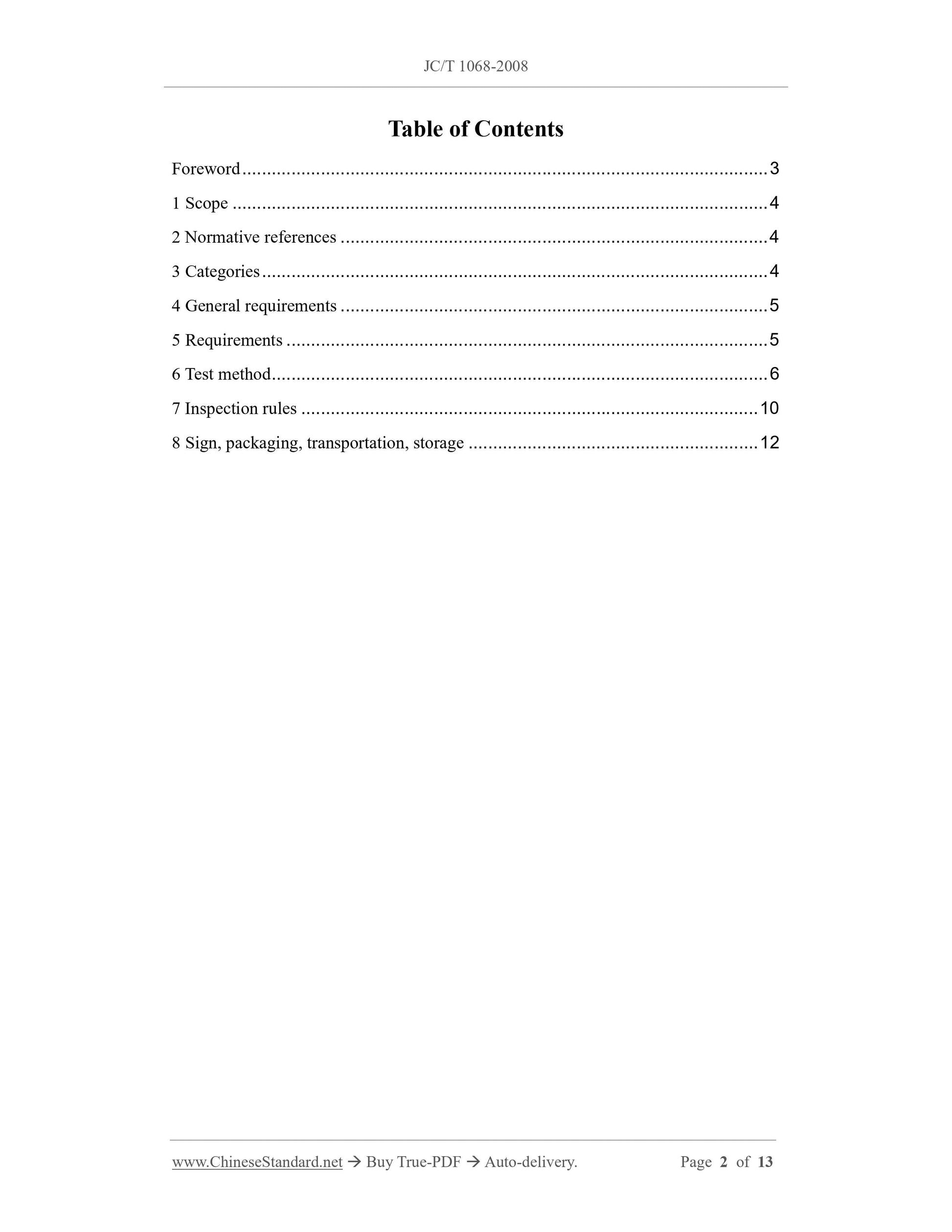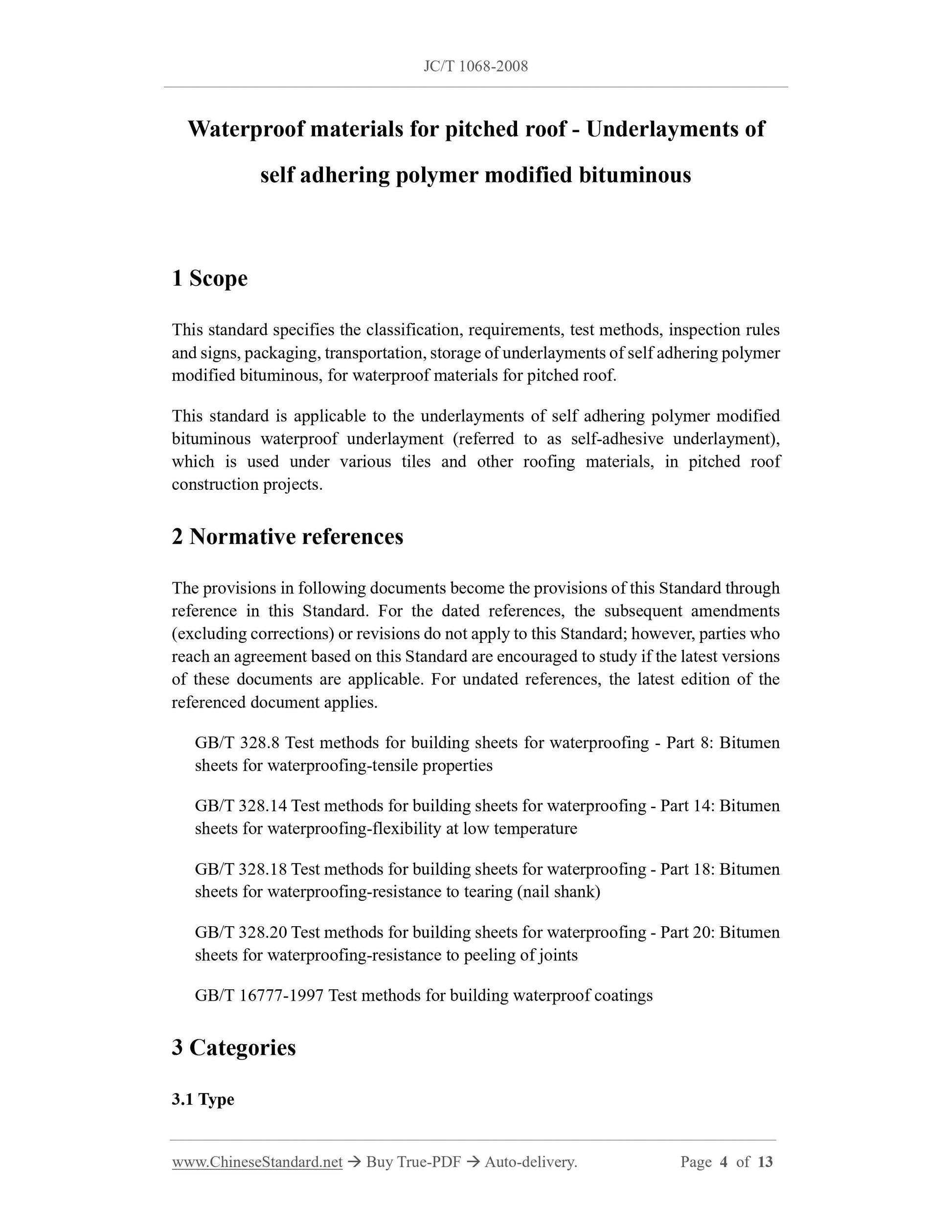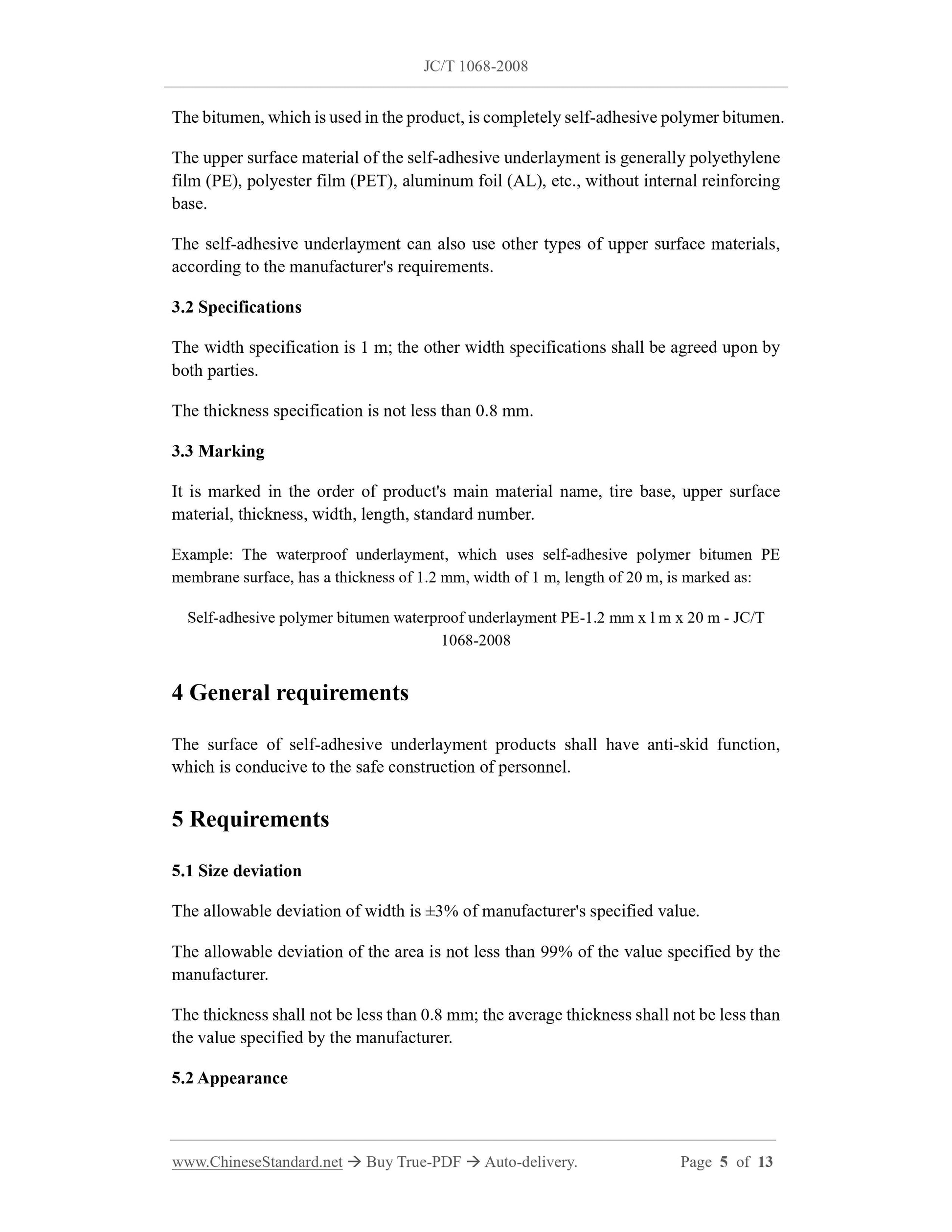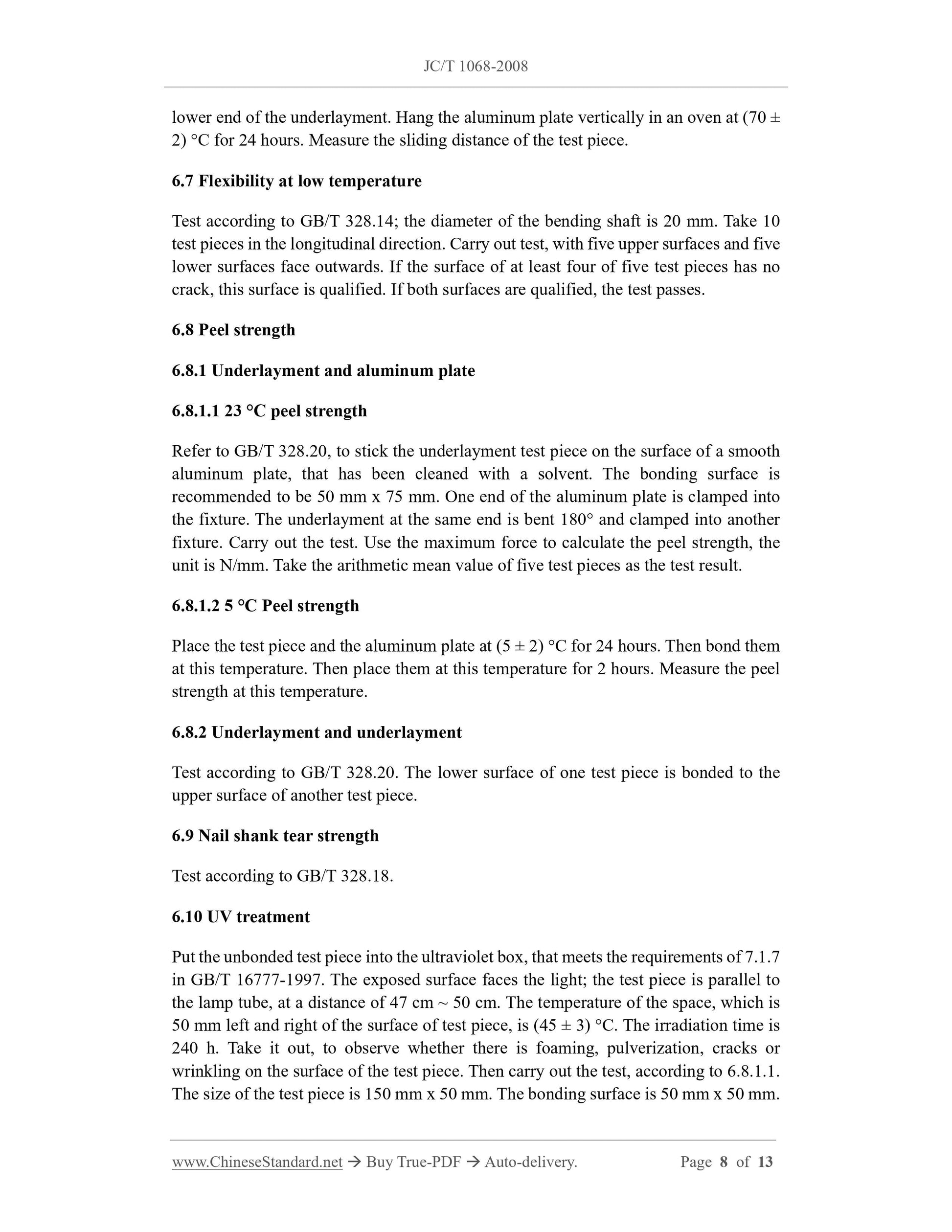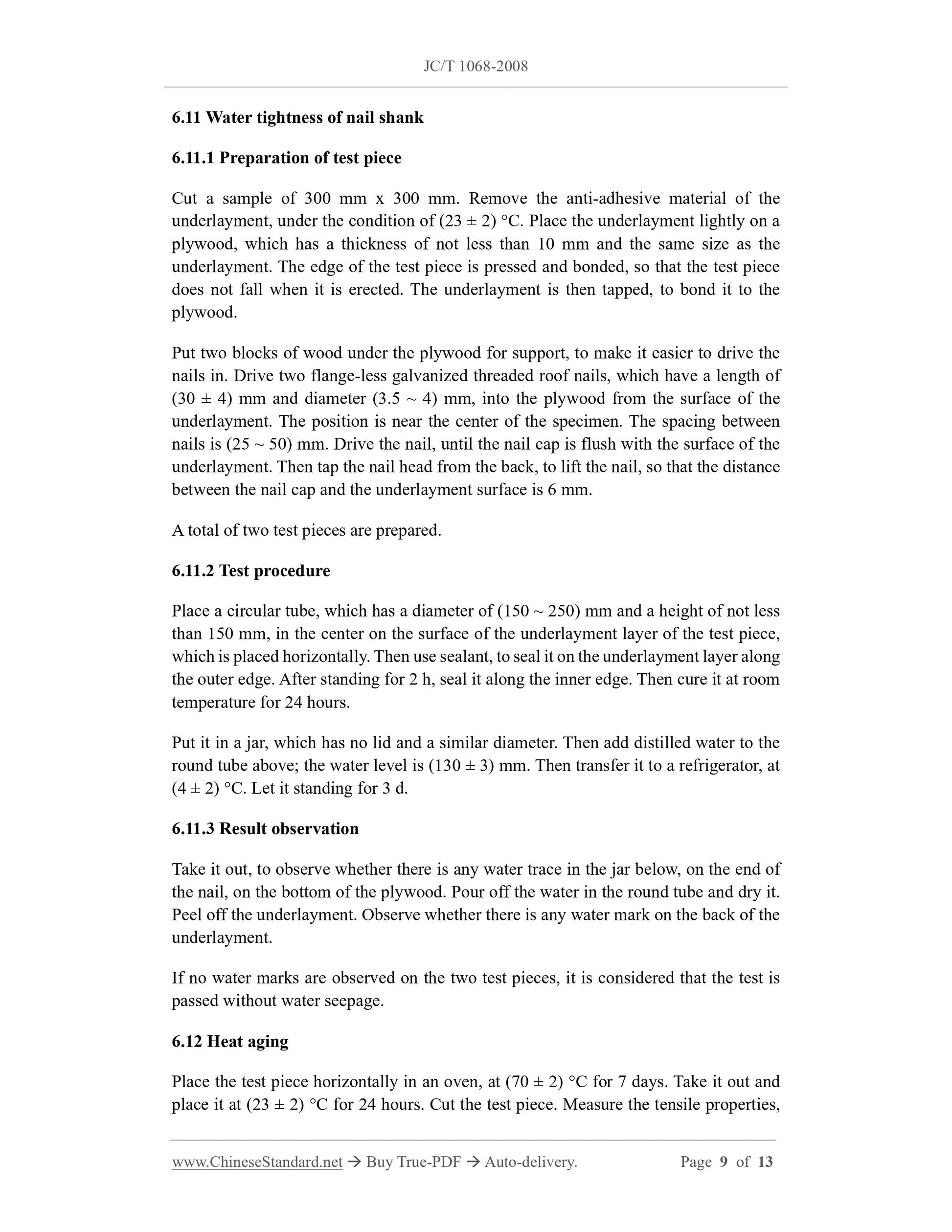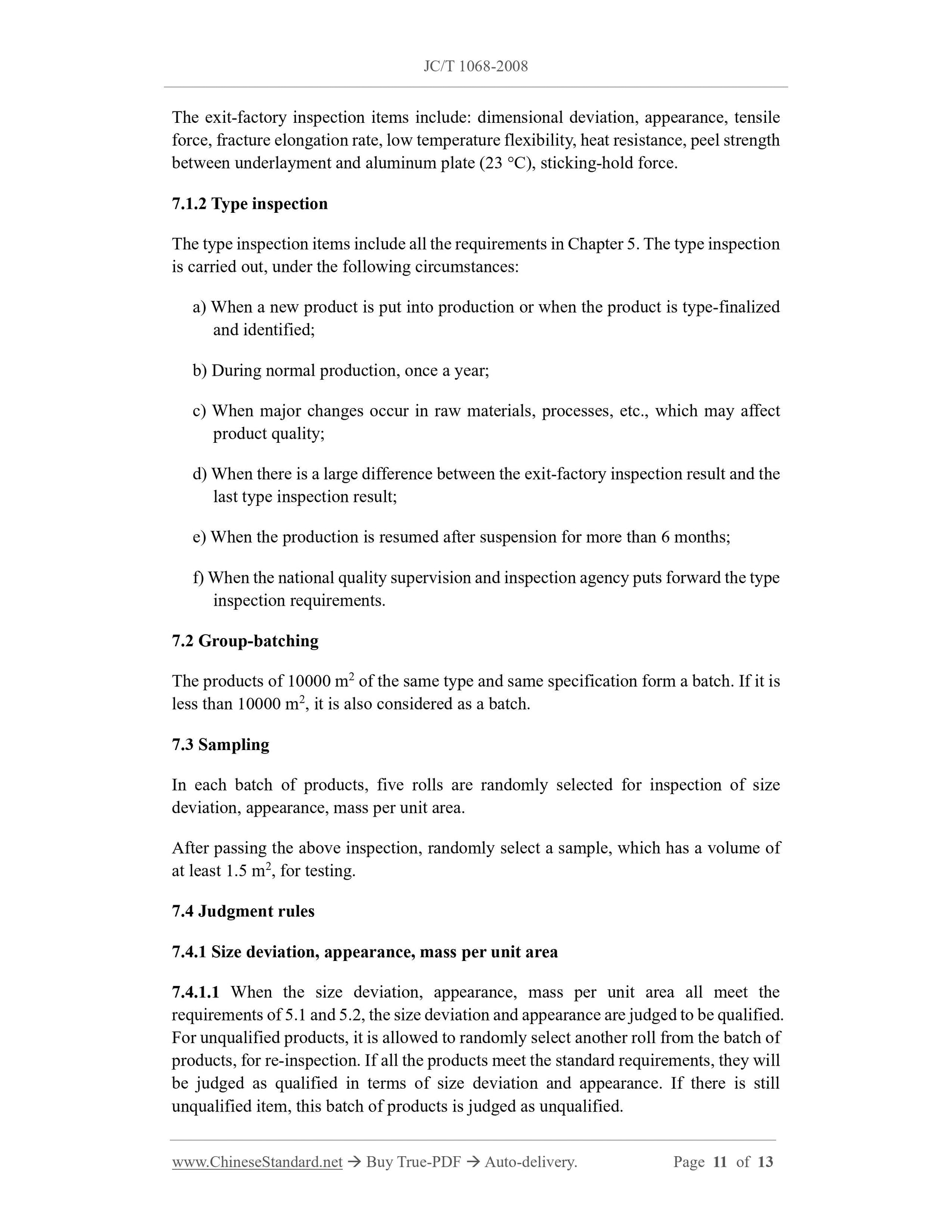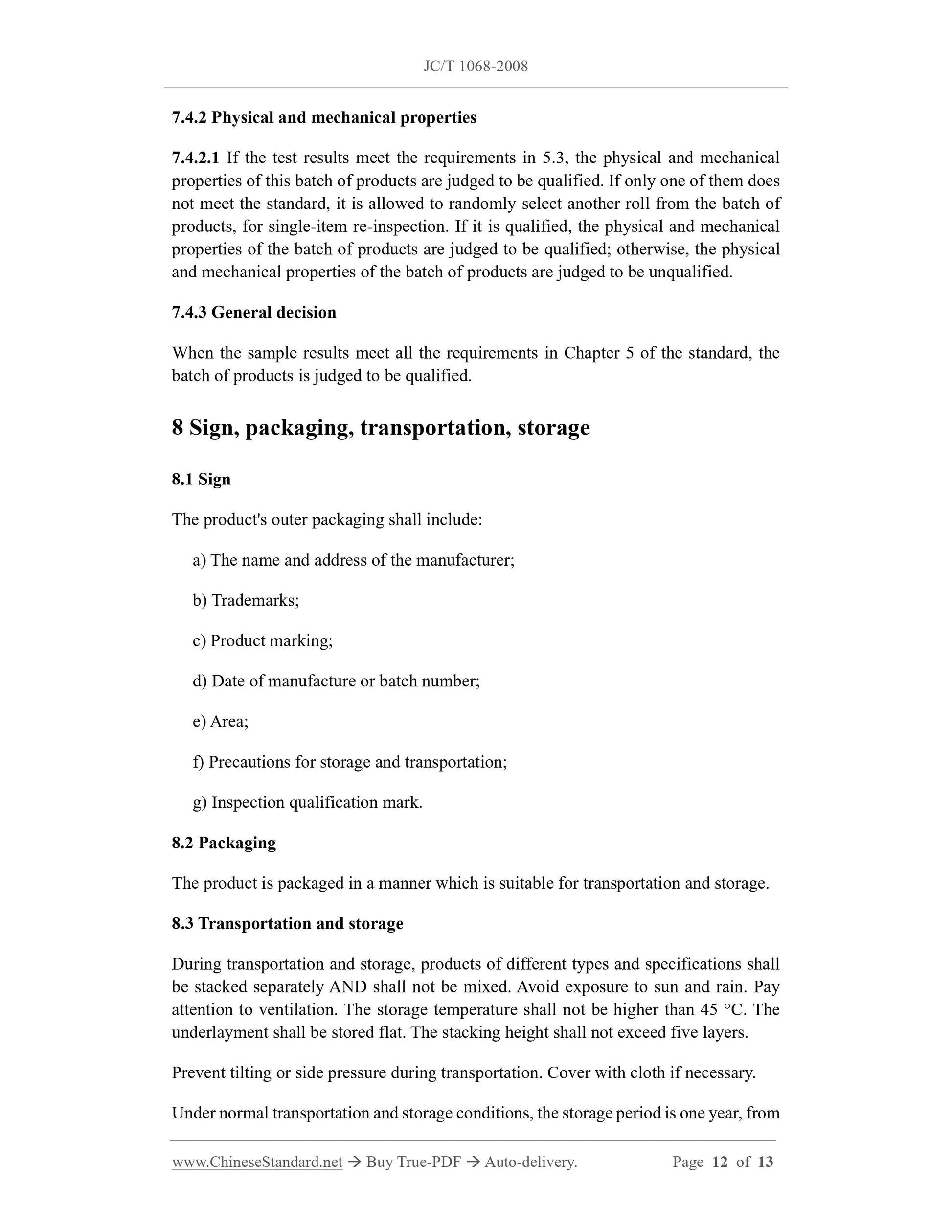1
/
of
8
www.ChineseStandard.us -- Field Test Asia Pte. Ltd.
JC/T 1068-2008 English PDF (JC/T1068-2008)
JC/T 1068-2008 English PDF (JC/T1068-2008)
Regular price
$130.00
Regular price
Sale price
$130.00
Unit price
/
per
Shipping calculated at checkout.
Couldn't load pickup availability
JC/T 1068-2008: Waterproof materials for pitched roof Underlayments of self adhering polymer modified bituminous
Delivery: 9 seconds. Download (and Email) true-PDF + Invoice.Get Quotation: Click JC/T 1068-2008 (Self-service in 1-minute)
Newer / historical versions: JC/T 1068-2008
Preview True-PDF
Scope
This standard specifies the classification, requirements, test methods, inspection rulesand signs, packaging, transportation, storage of underlayments of self adhering polymer
modified bituminous, for waterproof materials for pitched roof.
This standard is applicable to the underlayments of self adhering polymer modified
bituminous waterproof underlayment (referred to as self-adhesive underlayment),
which is used under various tiles and other roofing materials, in pitched roof
construction projects.
Basic Data
| Standard ID | JC/T 1068-2008 (JC/T1068-2008) |
| Description (Translated English) | Primer of substrate used for bituminous waterproofing sheet |
| Sector / Industry | Building Materials Industry Standard (Recommended) |
| Classification of Chinese Standard | Q17 |
| Classification of International Standard | 91.060.30 |
| Word Count Estimation | 7,749 |
| Date of Issue | 2008-02-01 |
| Date of Implementation | 2008-07-01 |
| Quoted Standard | GB/T 328.14; GB/T 328.18; GB/T 328.20; GB/T 328.8; GB/T 16777-1997 |
| Regulation (derived from) | ?Development and Reform Commission Announcement 2008 No.11; |
| Issuing agency(ies) | Ministry of Industry and Information Technology |
| Summary | This standard specifies the sloping roof with a self-adhesive polymer bitumen cushion classification, requirements, test methods, inspection rules and signs, packaging, ship Discovery and so on storage. This standard applies to the sloping roof construction, various tile roofing materials and other materials used in the following self-adhesive polymer bitumen mat (referred to as self-adhesive cushion). |
Share
